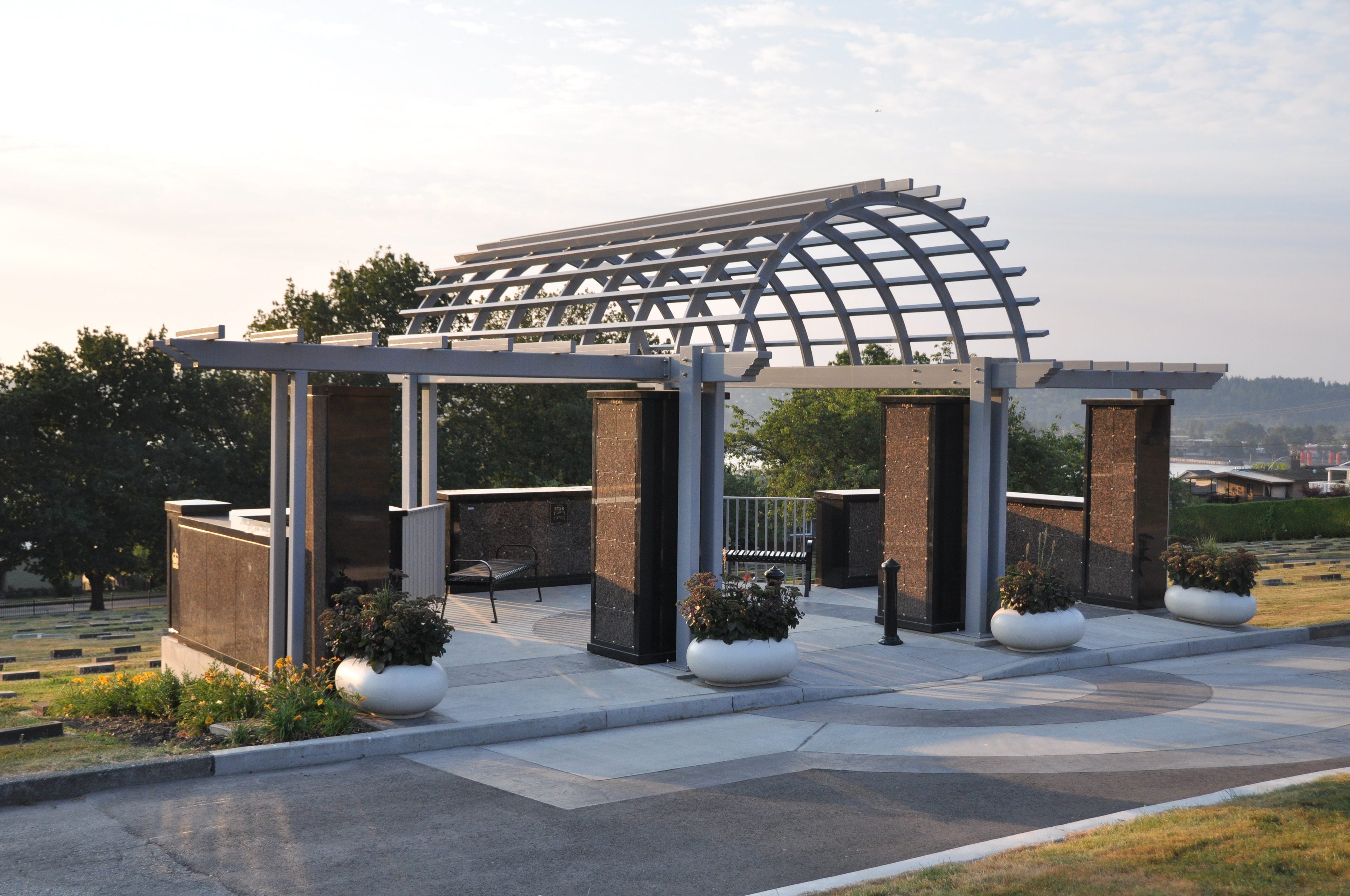Introduction
Every columbarium tells a story. It is not only the design but also the material that determines how this story will last across generations. Just as architects carefully select stone for a cathedral or bronze for a monument, the choice of materials for columbaria defines their durability, symbolism, and beauty.
At Memoria Columbaria, we work with three timeless elements — stone, bronze, and glass. Each has its role in creating spaces of silence, dignity, and remembrance. Let’s compare them in detail.
Stone: The Foundation of Timeless Architecture 🏛️
Stone has always been the language of eternity. From Roman columbaria to modern memorial parks, stone conveys strength and permanence.
-
Granite: The most common choice for its resistance to weather, freeze–thaw cycles, and long-term polishing.
-
Limestone: Softer in tone, used for lighter, natural aesthetics.
-
Marble: Elegant but less durable in harsh climates; often used for interior spaces.
Advantages of stone:
✔️ Extremely durable
✔️ Cultural and architectural resonance
✔️ Wide range of colors and textures
Considerations:
-
Heavier and requires skilled installation
-
Costs vary depending on rarity and origin
Bronze: Warmth and Legacy 🪙
Bronze carries a sense of tradition and artistry. Used for plaques, niche doors, and sculptural details, it adds depth and contrast to stone.
-
Resistant to corrosion with proper treatment
-
Develops a natural patina that symbolizes time and memory
-
Suitable for both classic and contemporary designs
Advantages of bronze:
✔️ Noble and prestigious appearance
✔️ Excellent for engravings and personalization
✔️ Complements both stone and glass
Considerations:
-
Requires occasional care to preserve finish
-
Higher material cost compared to stone
Glass: Light and Transparency ✨
In modern columbaria, glass introduces light — a metaphor for clarity and spiritual continuity. Transparent or frosted panels allow families to personalize niches while maintaining harmony.
-
Can be tempered or laminated for safety
-
Offers options for clear, frosted, or tinted finishes
-
Enhances architectural openness and modern identity
Advantages of glass:
✔️ Modern and symbolic
✔️ Customizable with colors, patterns, or engravings
✔️ Allows interplay with light, especially at dusk or dawn
Considerations:
-
Needs anti-vandal treatment in public areas
-
Sensitive to scratches if not properly handled
Choosing the Right Material Combination 🎨
Most columbaria use a combination of these materials:
-
Stone walls for structure and timeless strength
-
Bronze doors or plaques for heritage and personalization
-
Glass elements for modern identity and light
This blend creates balance — between tradition and innovation, permanence and openness.
FAQ: Materials in Columbaria
1. Which material lasts the longest?
Granite is considered the most durable, often lasting centuries with minimal care.
2. Does bronze require maintenance?
Only light care. Bronze naturally develops a patina, which many families see as part of its charm.
3. Is glass safe for outdoor columbaria?
Yes, with tempered or laminated glass and proper framing, it withstands weather and vandal risks.
4. Which material is best for eco-friendly projects?
Local stone is the most sustainable, as it reduces transportation and is naturally abundant.
5. Can families choose the material themselves?
Yes. At Memoria Columbaria, each collection can be adapted to different material preferences.
Conclusion
The material of a columbarium is more than construction — it is meaning. Stone anchors memory, bronze honors legacy, and glass reflects light and renewal. Together, they create architecture that carries silence and dignity across generations.
👉 Explore our collections — Repose, Legacy, Light, Garden, City, Pavilion

